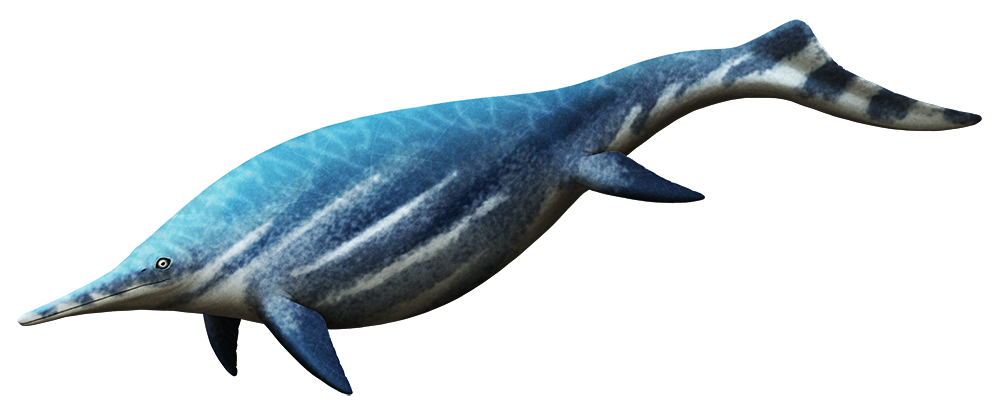Most ichthyosaurs were similar in size to the modern dolphins they convergently resembled, but during the Late Triassic some of them got much much bigger.
Shonisaurus popularis lived about 222-212 million years ago, in Nevada, USA — a region that’s currently made up of dry deserts, but which was submerged under a tropical inland sea at the time.
At around 15m long (49′) it was roughly the same size as a modern humpback whale, with a long narrow snout, a fairly deep fusiform body, and four equally-sized flippers. Unlike many other ichthyosaurs it doesn’t seem to have had a dorsal fin, and its tail fluke shape was rather “primitive” indicating it was probably a slow cruising swimmer.
Juveniles had a few small teeth at the tips of their jaws, but larger adults were entirely toothless, suggesting that they may have specialized in different ecological niches at different stages of their lives. Fully-grown Shonisaurus probably mostly fed on prey such as soft-bodied cephalopods and small fish, which must have been incredibly abundant in the ancient Nevadan sea to support a population of such huge marine reptiles.
But Shonisaurus popularis wasn’t even the biggest of the Late Triassic giant ichthyosaurs. Further north in British Columbia, the closely related species Shonisaurus sikanniensis reached lengths of up to 21m (69′), and fragmentary remains from England hint at something even larger still, estimated at around 25m (82′) – close in size to the modern blue whale, and potentially being the largest non-dinosaurian reptile to ever live.

